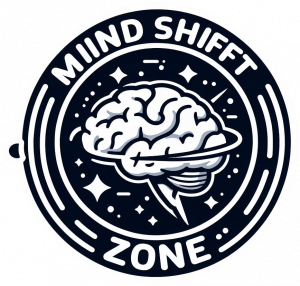In this blog, we’ll show you how to write a personal development plan.
Not just for your career but for your personal life, too. Why? Why is personal development important? Because without one it’s too easy to forget about making progress. Without a plan, you fall into the helpless habit of being inactive.
Inactivity isn’t necessarily laziness – it’s very possible to feel fulfilled and busy in your life even without a plan. But having one helps you stay focused on improving yourself and spending more time on constructive activities that are important to you.
Here’s what Bill Gates said about planning:
“We always overestimate the change that will occur in the next two years and underestimate the change that will occur in the next ten. Don’t let yourself be lulled into inaction”
Gates is a guy who knows a thing or two about planning and success. So take notice!
A plan helps you organise your goals into achievable steps so that you can vanquish inactivity from your life. In this blog, we’ll find out how to write a personal development plan in four easy steps.
Why make a personal development plan in the first place?
If you want to run a half marathon, how would you go about it? To train, you could start by running the full distance on your first day. Unfortunately, that might get you injured and defeated right from the start.
A better way to approach that goal is to set up a program for achieving your fitness dreams. How far do you have to run today? What about tomorrow? What days should you rest to let your body recuperate?
Breaking your larger dream into actionable items helps you make incremental steps – that’s what a personal development plan is all about. It’s also important to consider whether it’s a personal or professional development plan you need. Still not convinced? Check out ‘why do I need a personal development plan?’.
How to write a personal development plan in 4 steps
Without further ado, let’s look at 4 simple steps for how to write a personal development plan. It’s possible to do it in an afternoon or even to make some notes while you read!
Step 1. Identify your “why”
The first step of how to write a personal development plan is to look inward. You need to answer some personal questions before you can do analysis or set up goals. Start by asking yourself “why?”
Your “why” happens to be your mission statement. It’s something that defines you and describes the way you want to fit in with the world around you.
For the half-marathon example, your mission is a lot loftier than simply “I want to run 24 km.” It would instead look like “I want to exercise more often in order to feel better about myself.”
Has a nicer ring to it, doesn’t it?
Or, if you were chasing a new job, your mission statement could be “to get a promotion and take on more responsibility, challenge myself and better support my family.”
Both mission statements don’t just describe what you want to do – they have an element of why which will be the main motivator during your personal development.
Step 2. Do a SWOT analysis
Armed with a mission statement and an understanding of what you want to accomplish (and why), you’re ready to move on to some analysis.
A SWOT analysis is a way that you can chart out your personal development in a visual way. Don’t worry, it’s not that hard.
Start by dividing a paper (or a computer spreadsheet) into four sections: strengths, weaknesses, threats and opportunities.
To use the half-marathon example:
- In the strengths column, write down areas that you excel in. You may currently be an avid hiker or have competed in track and field back in secondary school.
- In the weaknesses column, make an honest assessment of some of the things that might hold you back. These are things like your TV binge-watching habit or your lack of confidence to sign-up for the race in the first place.
- In the opportunities column, write down things that might make it easier to achieve your goal. You might be comforted by the fact that the half marathon isn’t a competitive race – you’re only interested in finishing for your own personal goals, not to compare yourself to other runners.
- In the threats column, note down the things that might prevent you from achieving your goal. Will an insufficient support system (including your friends, personal trainer or a workout buddy) stop you from running your first half-marathon?
The best thing about the SWOT analysis is that it denotes, in a clear and visual way, the entire ecosystem of your personal development situation.
For instance, by comparing your weakness (poor motivation) with one of your threats (lack of support system), it might become clear that you should convince a friend to train and run the race with you. Together, you’ll stay accountable and rely on each other for motivation.
You can further compare the other quadrants with each other to come up with similar and concrete action items to help you start formulating a plan.
Step 3. Make sure your goals are SMART
So far, you’re off to a good start with your personal development plan. Now you need to add some goals. Your SWOT analysis can inform you of the types of goals that support your personal development mission, but can’t describe them in an efficient way. That’s where the SMART system of goal-setting comes in.
A goal should be:
- Specific: don’t be vague about your intent.
- Measurable: how can you track progress?
- Achievable: it should be realistic.
- Relevant: focus on the main purpose of your objective.
- Time-bound: it needs to be anchored in time (with a start and finish).
To illustrate, let’s look at an example of a goal: “Spend less time watching TV and more time exercising.”
This might seem like a good statement at first. In reality, it has good intentions but it will be difficult to accomplish. It’s vague because it doesn’t really specify your purpose, which is to train for a half-marathon.
There’s also too much going on with the statement. Is your goal to spend less time on the couch or to run more? The two may be related, but they should probably be separate goals instead. It’s simpler to focus on one objective per goal.
Lastly, there’s no set time period for you to track your progress. It could last forever and you won’t really know if you made an impact!
Now let’s look at a SMART statement: “For the first month of training, run two times a week for at least 5 km.”
See how it’s cleaner, easier to measure and highly specific? It has every element of the SMART principle.
Step 4. Future-proof your plan
You’ve learned how to write a personal development plan. It has an overall mission statement and goals that are supported by thorough analysis. Now what?
It’s time to future-proof it. You need to know that, despite your best efforts, you can’t possibly guess how your life will change over time. Therefore, you can’t include absolutely everything into your plan.
That’s why it’s perfectly natural for your plan to change and evolve over time. Be sure to review it every now and then to update it. Doing so will improve it and will ensure your plan reflects your shifting personal priorities.
Another great way to future-proof your plan is to separate it into different periods. To do so, denote what goals you want to accomplish in milestone-worthy timeframes: six months, one year, two years and so on.
And that’s it! To learn more about self-development check out our blog why is personal development important.











